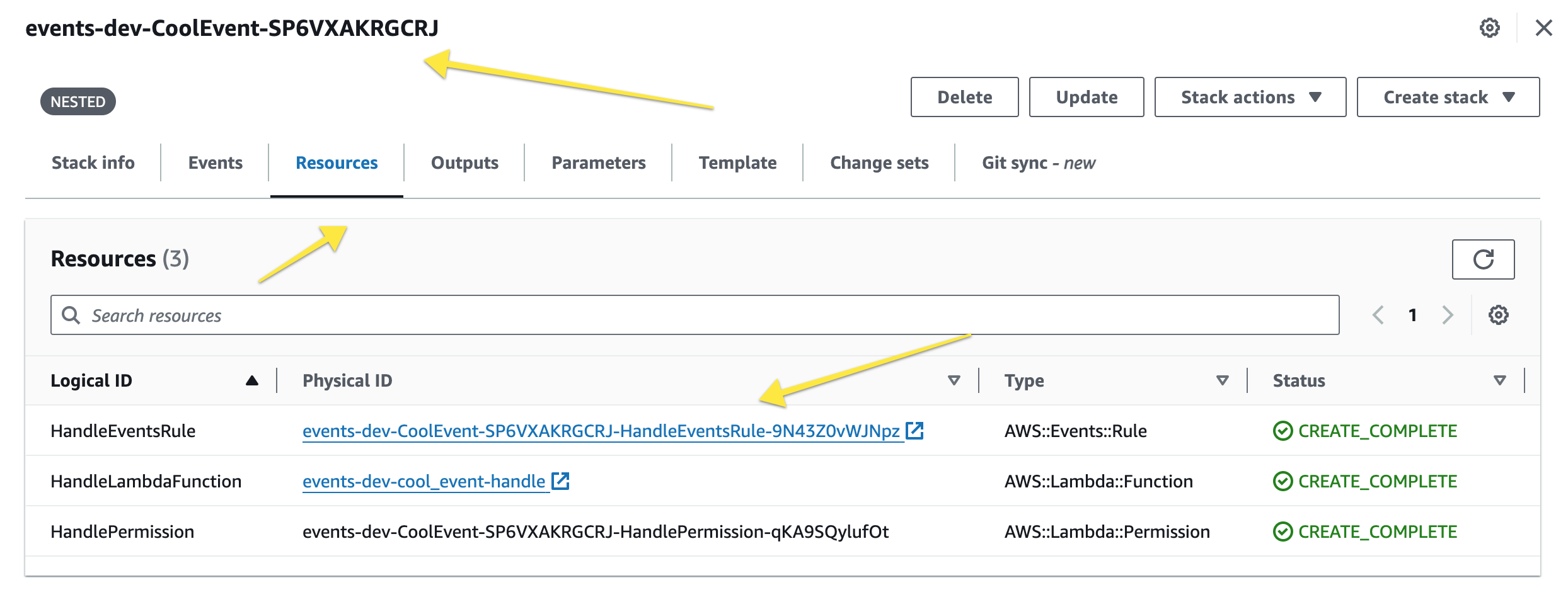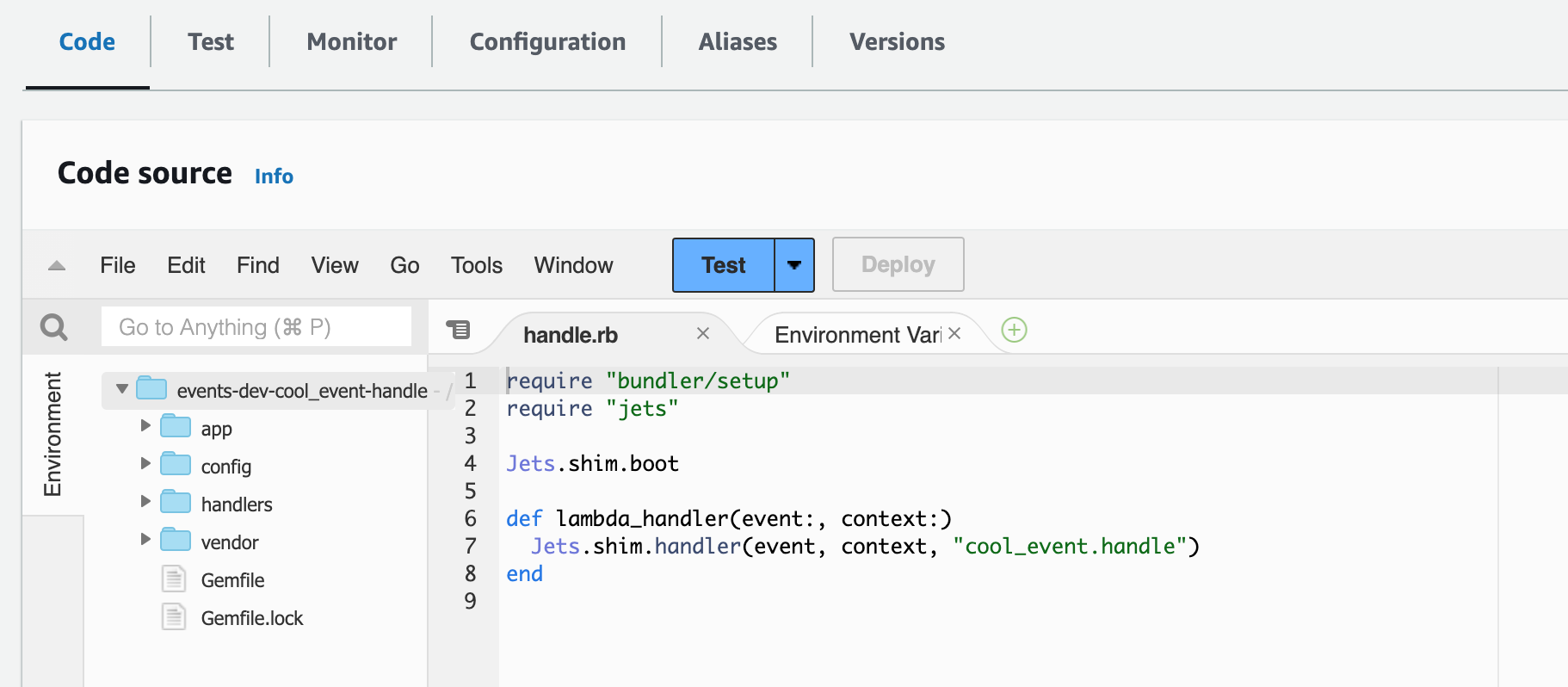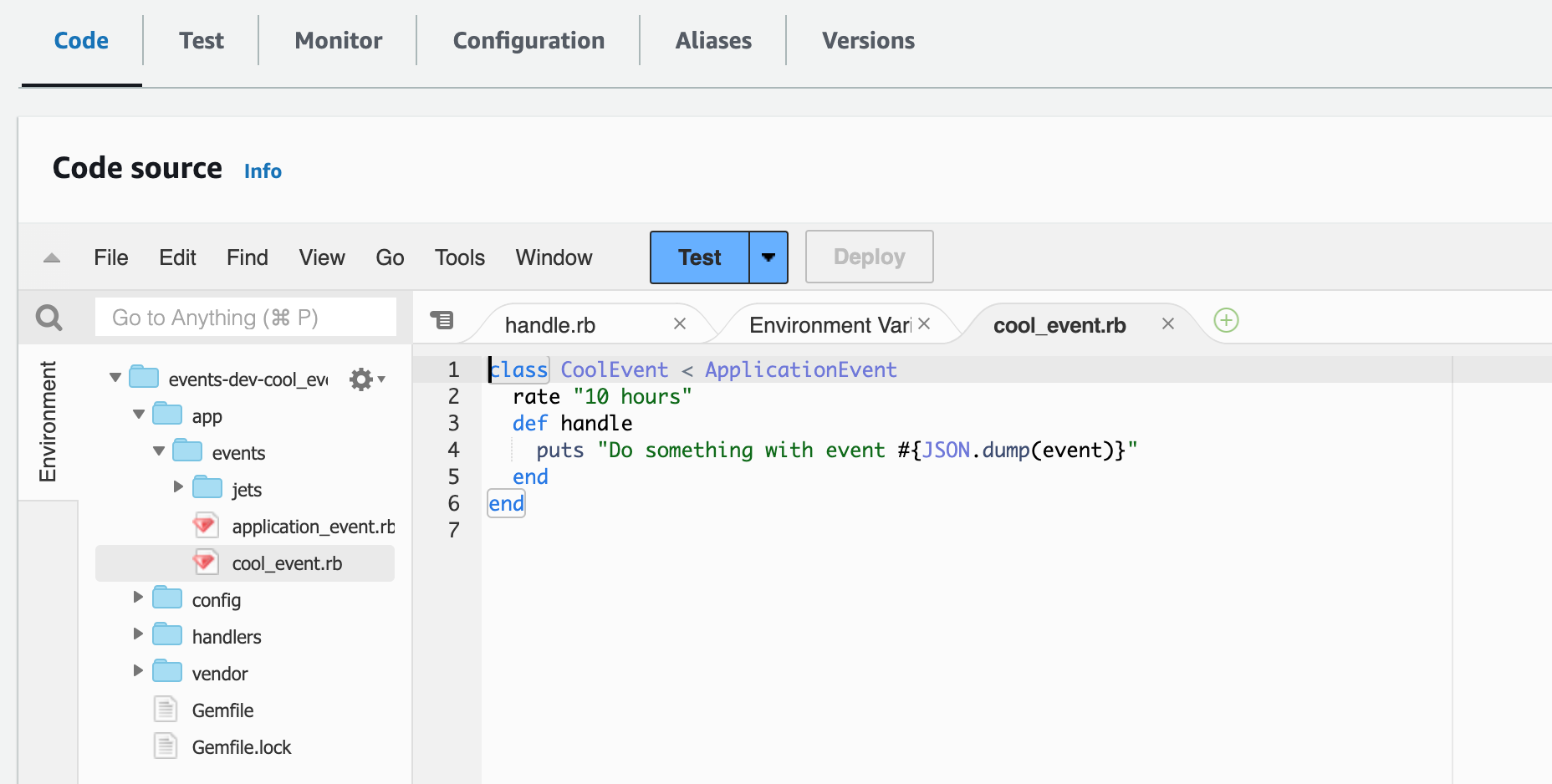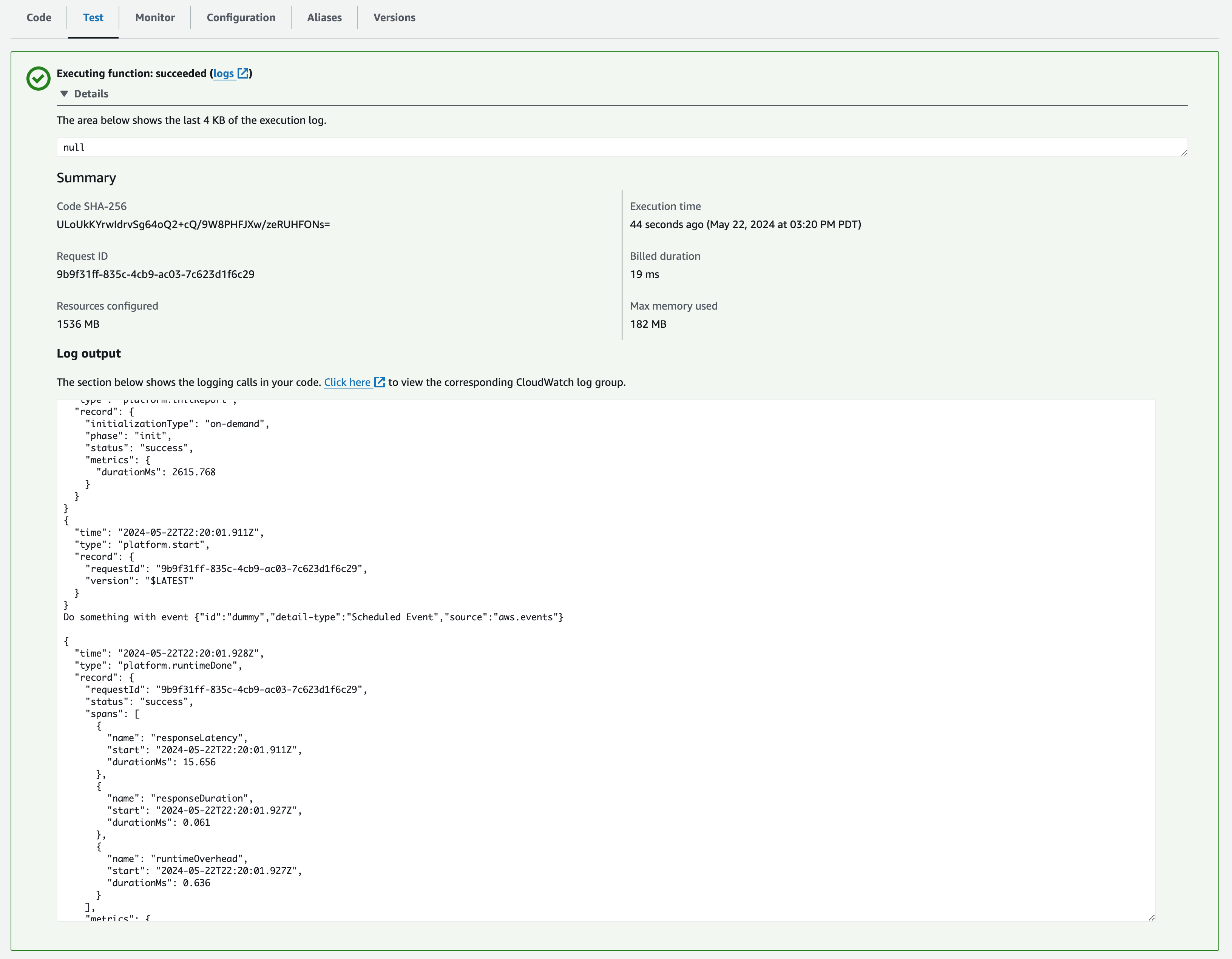Review Deploy
Let’s review what been deployed.
CloudFormation Console
Jets leverages CloudFormation for deployment, so check the CloudFormation console. You should see something like this:

Jets creates a main parent events-dev stack that in turn creates a few nested CloudFormation stacks. This solves the CloudFormation quotas and limits. Here’s a summary:
- There is a stack that manages the Event, it starts with
events-dev-CoolEvent-*.
Lambda Resources
If you look at CloudFormation stack events-dev-CoolEvent-* Resources tab, you’ll see the Lambda Function.

Clicking on the Physical ID link takes you to the Lambda console. You can see the Lambda handler code there.

The Lambda function handler shim is generated as part of jets deploy. The handler is the “point of entry” for Lambda and provides interface that Lambda expects. The Jets.shim.handler ultimately calls the events app. You can open app.rb and see the code we created earlier.

Test Lambda Function
Let’s test Lambda function manually with the Lambda Console built-in Test functionality. For the event, you need a payload that mimics what Lambda URL would send to the Lambda function. Here’s an example:
{
"id": "dummy",
"detail-type": "Scheduled Event",
"source": "aws.events"
}
After you click Test, you’ll see a “Executing function: succeeded” message with a link to the logs.

Clicking on the logs link takes you to the CloudWatch Logs Console. It shows all the Log Streams for the Log Group for the Lambda Function. Clicking Search Log Group is then filtering by 1m or 30m is an easy to to see the logs.

Testing with the Lambda console is a bit of a pain because we need to figure out the event payload structure. See Debug Event Payloads for more example payloads.
Next, we’ll make some updates and do more testing.
